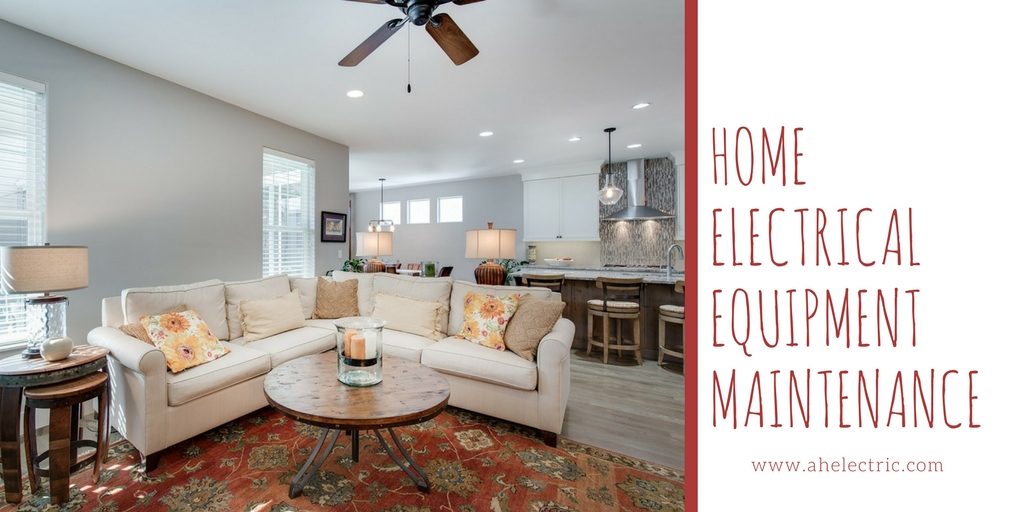
A homeowner’s to-do list can often seem endless. Clean the gutters. Mow the lawn. Declutter the garage. Deep clean the kitchen and bathrooms. Repair a leaky faucet. Change the HVAC filters. Then, there’s the big one: Maintain the home electrical equipment. Ensuring your home electrical equipment is in good shape can prevent damage, injuries, and high repair costs.
Here are some home electrical equipment maintenance tips.
Install Tamper-Resistant Receptacles
According to the 2008 National Electrical Code® (NEC), power outlets in homes with children are required to have tamper-resistant receptacles (TRRs), which are designed to protect them from accidental shock resulting from the insertion of foreign objects. TRRs are UL-listed for safety and reliability. If you don’t already have them, contact a licensed electrician to install tamper-resistant receptacles throughout your home.
Test GFCI Outlets
Short for ground-fault circuit interrupters, GFCI outlets are designed to constantly monitor electricity flow, and instantly “trip” anytime an imbalance is detected. Building codes require GFCI installation in rooms where there is water such as a kitchen, bathroom, laundry room, and garage.
You will notice two buttons on a GFCI: A red one, which activates the outlet after the built-in breaker is tripped, and a black one that tests it to ensure proper functioning. The U.S. Consumer Product Safety Commission (CPSC) recommends testing these outlets once a month as well as after installation or an electrical power outage.
To test your ground-fault circuit interrupters, plug a lamp into the outlet. Turn the lamp on and press the GFCI’s test button. Did the light go out? If not, the outlet is not working properly, and you should contact a licensed electrician to correct the problem and/or replace the outlet.
Check Weatherstripping
If the weatherstripping around your home’s windows and doors is brittle or cracked, replace it. Weatherstripping helps to reduce drafts as well as block energy loss. You can find several different materials available at most any local hardware or home improvement store. The right one to choose will depend on the style of the window or door. Just cut to size and install according to manufacturer instructions.
Change Your HVAC Filters
Your heating, ventilation, and air conditioning (HVAC) system circulates air throughout your home. Its goal is to ensure the occupant’s thermal comfort and acceptable indoor air quality. HVAC filters are just one of the many components that work in unison with the system. These filters should be changed every 30 to 90 days, depending on your system, and whether you have pets or household members with allergies.
Change Batteries in Detectors
Smoke and carbon monoxide detectors are installed for your safety. Ensure they work properly by testing them every month. Change their 9V batteries every six months, or earlier if the alarm chirps, warning that the battery is low. Alarms with non-replaceable batteries are designed to remain effective for 10 years. Follow the National Fire Protection Association (NFPA) guidelines for installation.
Label Your Breaker Box
Labeling the breakers in your breaker box, properly known as the main service panel, will save time for both your and an electrician. You can make nice, neat, black-and-white labels for each breaker with a label maker. Create labels that are easy to read and won’t cause confusion such as “Master Bed.,” “Hall Bath,” and “Laundry Room.” Label breakers that are not connected to anything as “Spare.”
